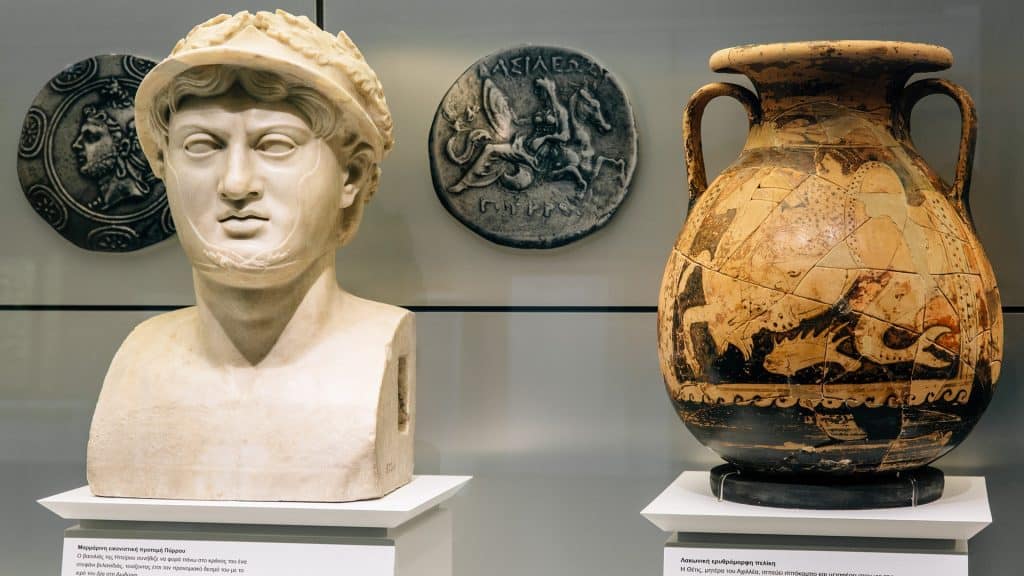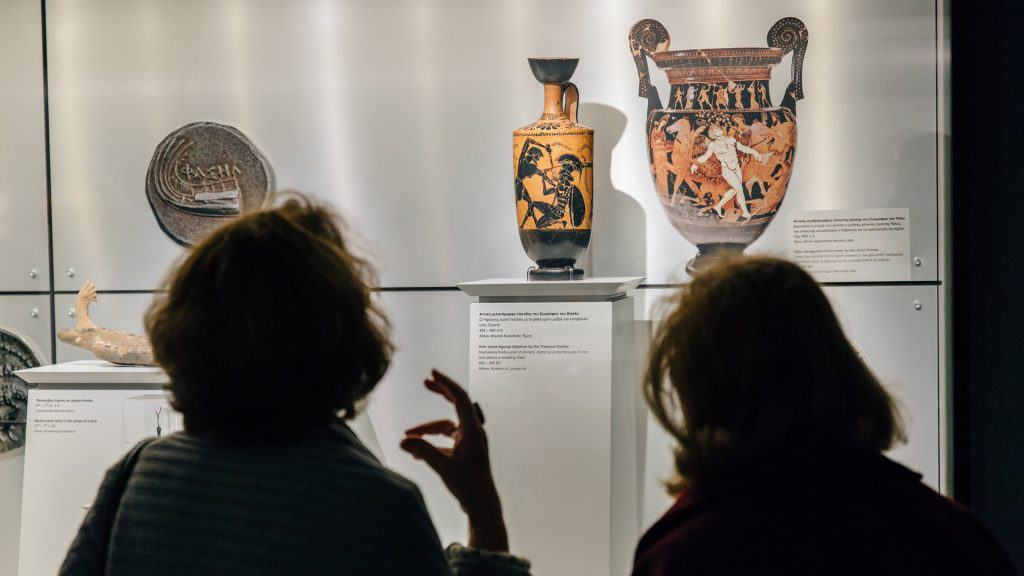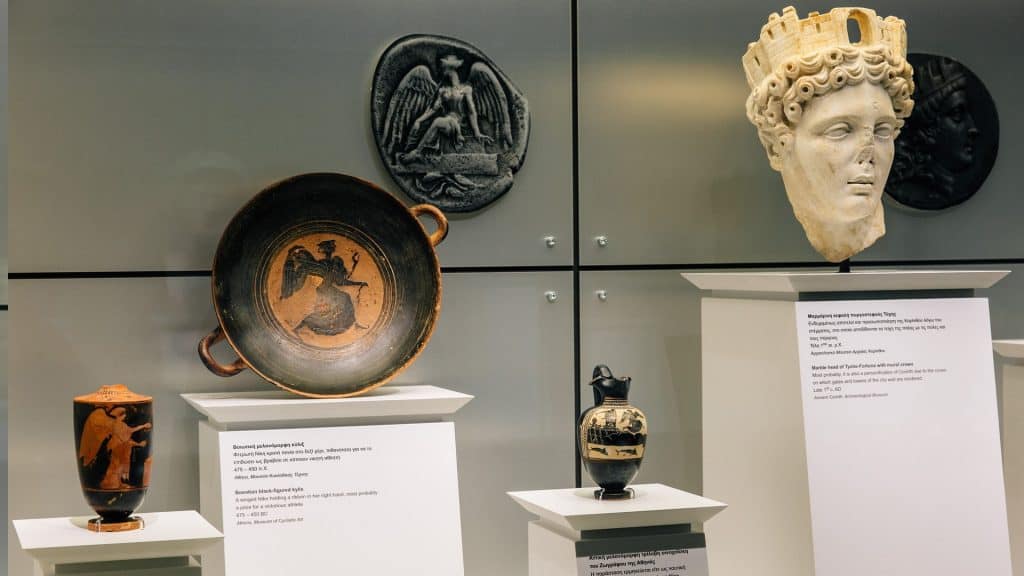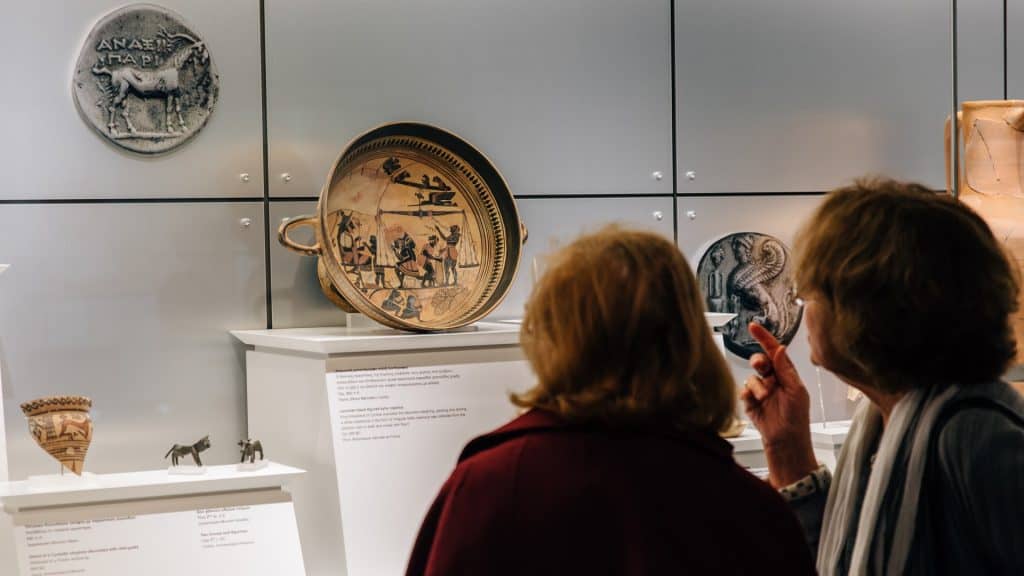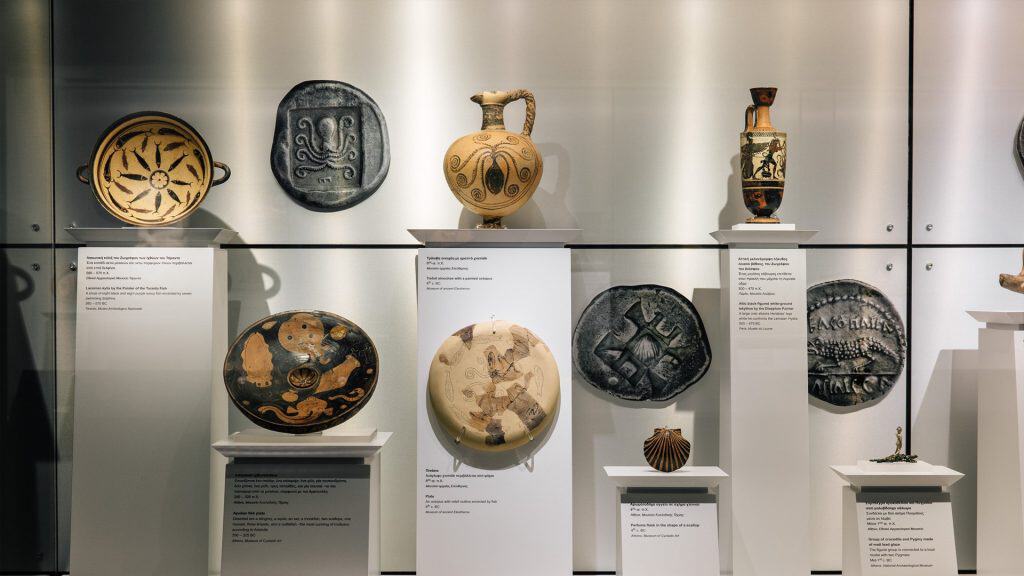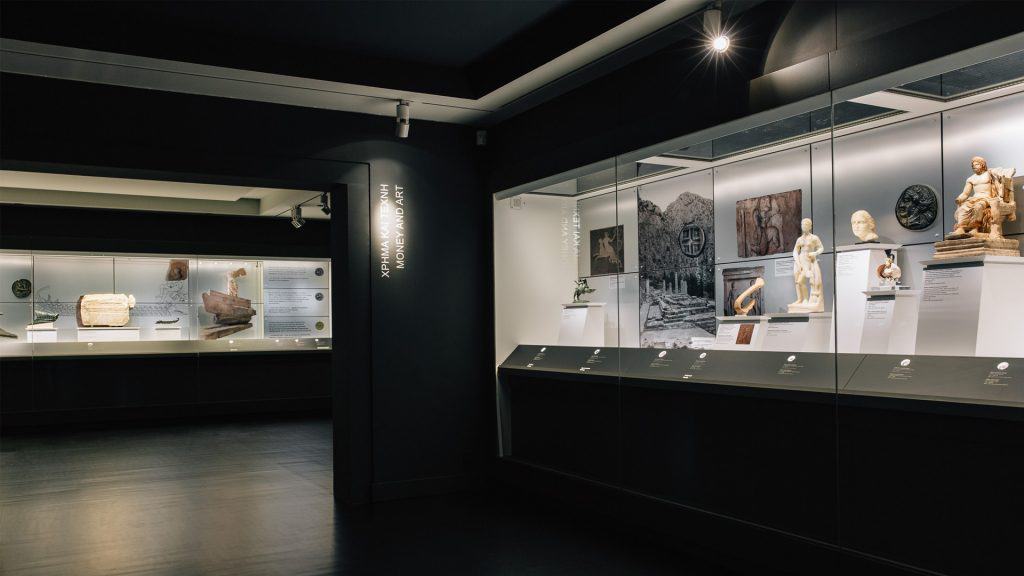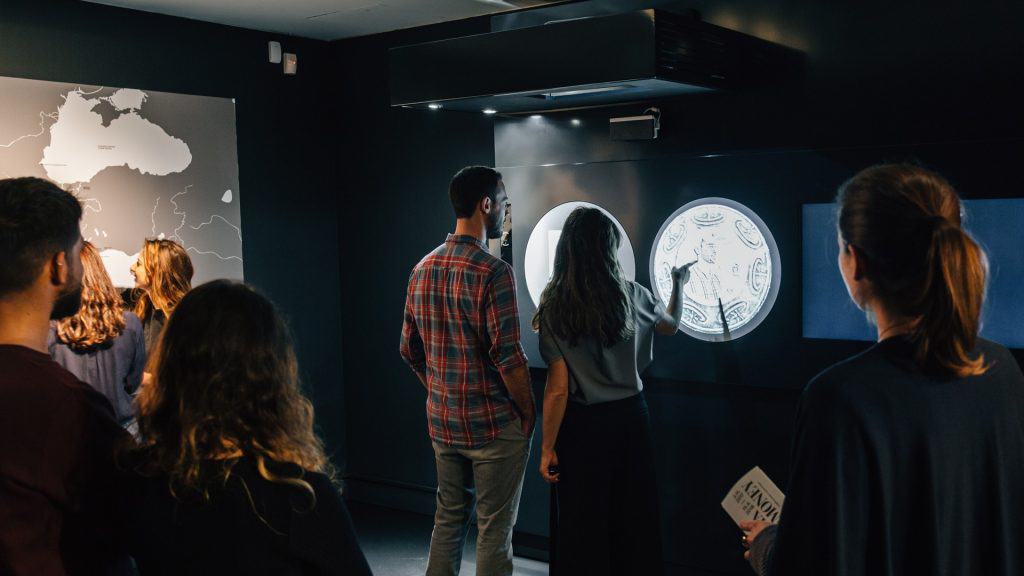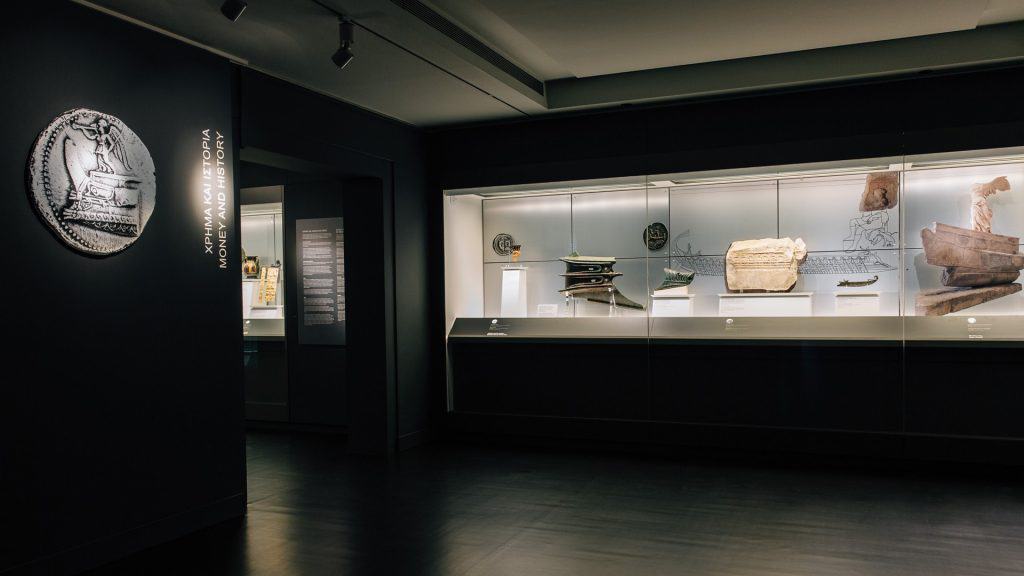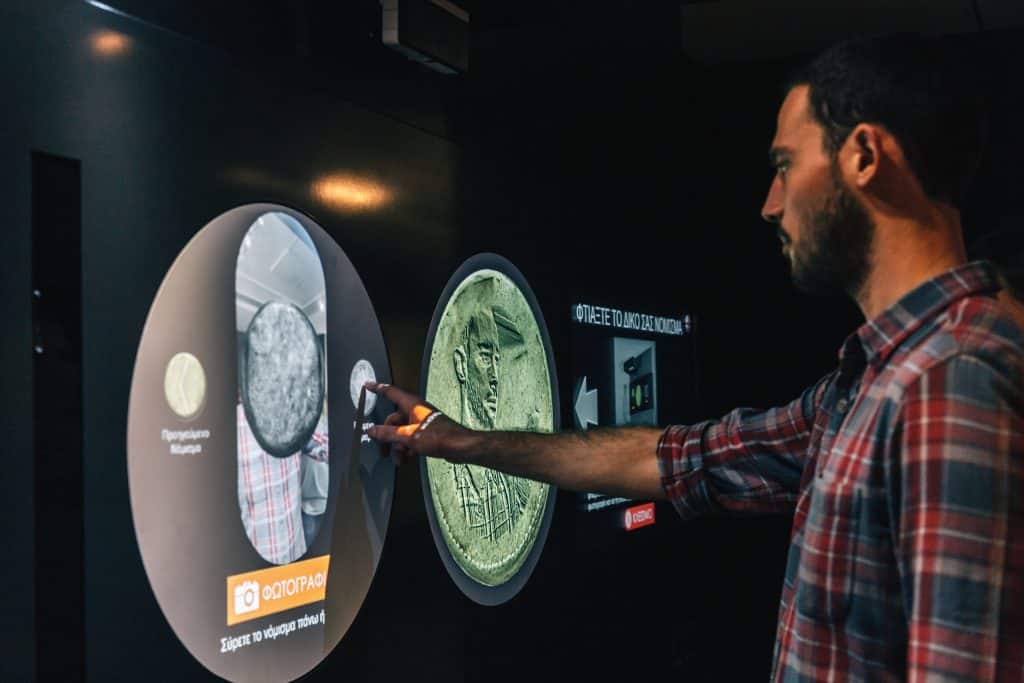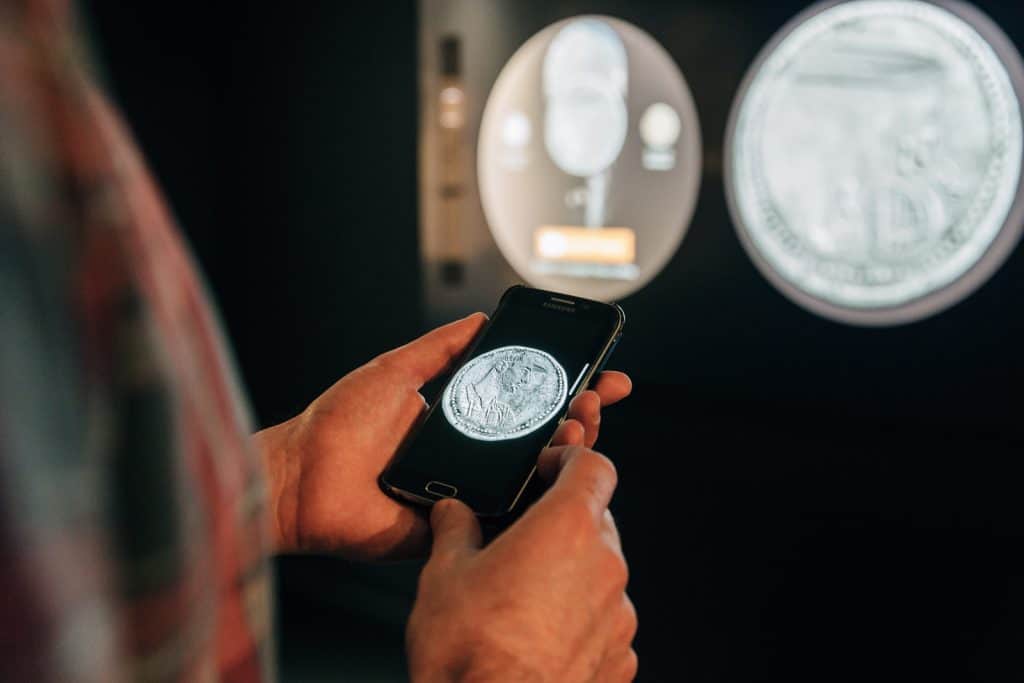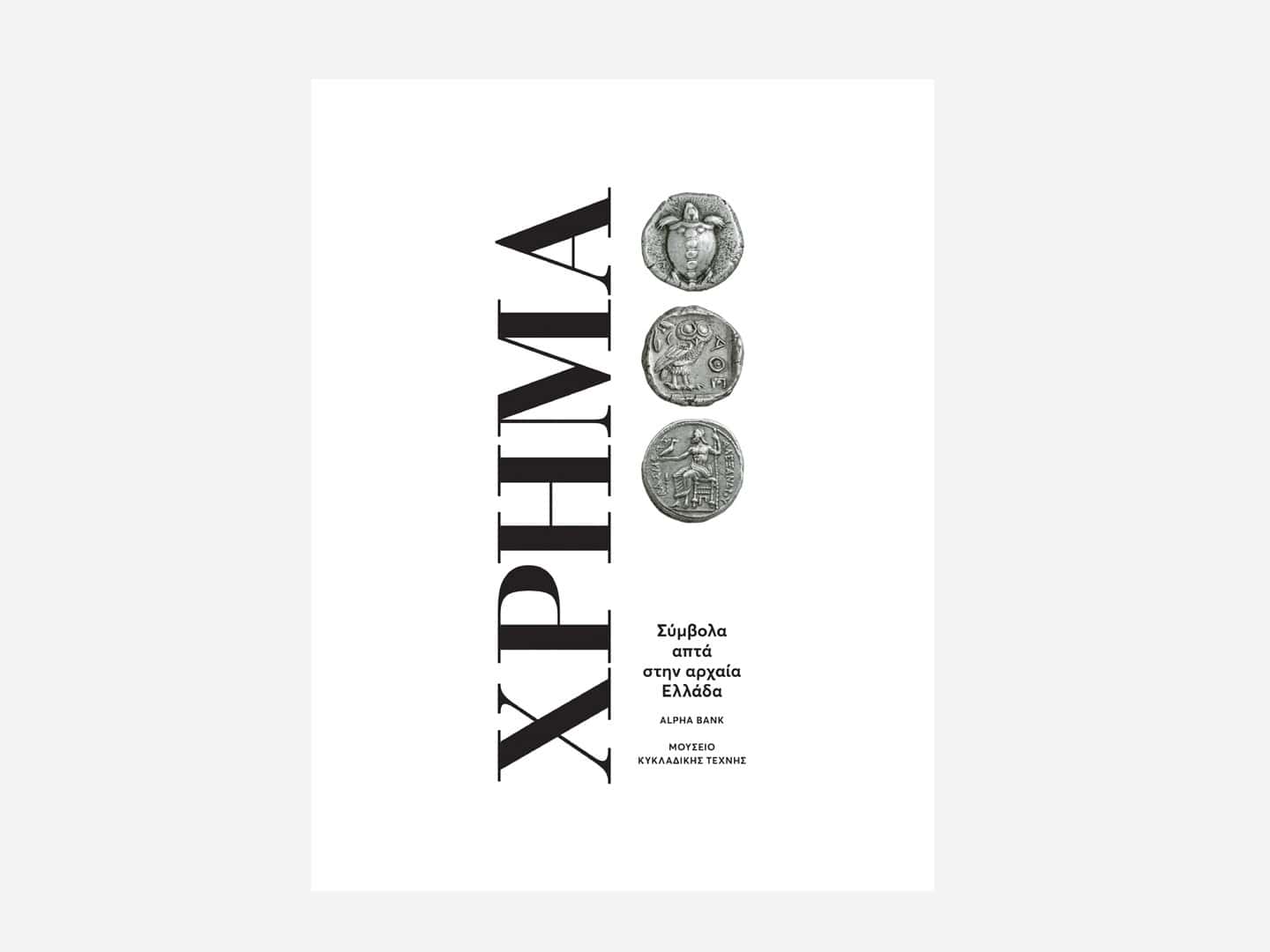MONEY. Tangible symbols in ancient Greece
ARCHAEOLOGICAL EXHIBITION
2 NOVEMBER 2017 - 15 APRIL 2018
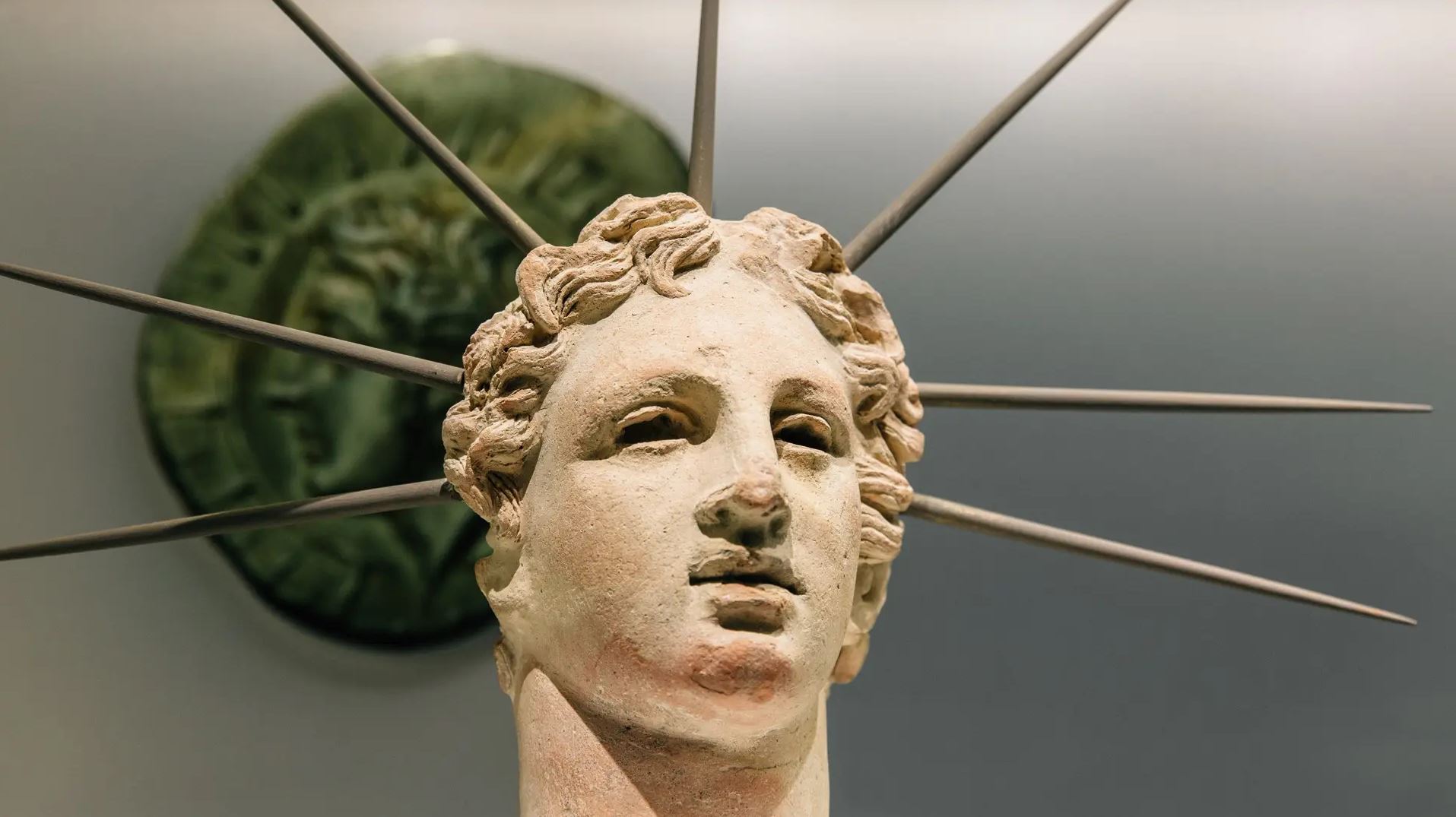
THE EXHIBITION
The exhibition presented a different side of coins, which first appeared in the late 7th century BC. During antiquity, the coin had an additional use related to its iconography: it was a symbol, but also something that people could hold in their hands, making it a tangible symbol.
The exhibition was structured along eight themed units and exhibited 85 coins from the Alpha Bank Collection alongside 159 objects (clay vases, terracotta figurines, marble and bronze statuettes, reliefs, gold jewelry, measuring vessels, coins from closed assemblages and inscriptions) from 32 archaeological museums and collections in Greece, Italy, France and the United Kingdom. The iconography of these objects was linked directly to each unit’s symbolic content.
THEMATIC UNITS
Money and Transactions, Money and Trade, Money and Art, Money and History, Money and Circulation of Ideas, Money and Propaganda, Money and Society, Money and Banks
ARTWORKS
Alpha Bank Numismatic Collection
The Alpha Bank Numismatic Collection is considered one of the most important collections of coinage worldwide, comprising 11,000 coins from the ancient Greek world. A few extremely rare pieces stand out, representing unique examples of engraved ancient art. The Collection spans from the end of the 7th century BC (the invention of coinage) to the 3rd century AD, when coin production was brought to an end in the cities of the Roman Empire.
The Collection also includes a number of Roman and Byzantine coins. The first aim of the Collection is to highlight how far Greek culture spread during antiquity, as well as its overall influence on the ancient world. To this end, the Numismatic Collection organizes exhibitions and lectures, participates in academic symposiums and international conferences, and produces relevant publications.
CURATED BY
– Professor Dr Nicholas Chr. Stampolidis
Director of the Museum of Cycladic Art
– Yorgos Tassoulas
Archaeologist MPhil., Curator of the Museum of Cycladic Art
– Dr Dimitra Tsangari
Curator of the Alpha Bank Numismatic Collection
IDEA – COORDINATION
– Nicholas Chr. Stampolidis
– Dimitra Tsangari
EXHIBITION CATALOGUE
The exhibition was accompanied by a Catalogue in Greek and in English which include presents all the works with analytical explanatory texts and copious illustrations.
ΓΙΝΟΥΜΕ
ΦΙΛΟΙ
